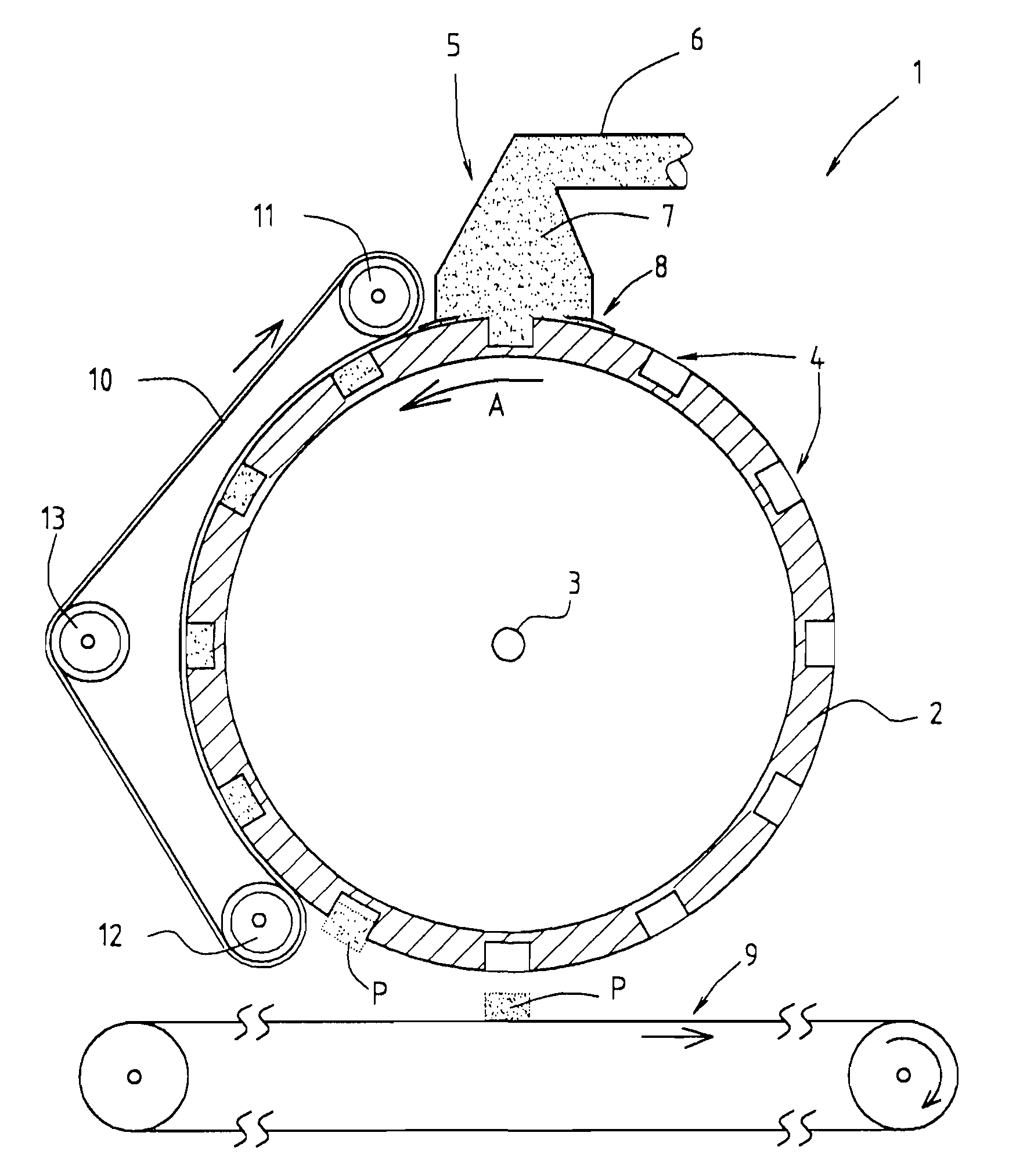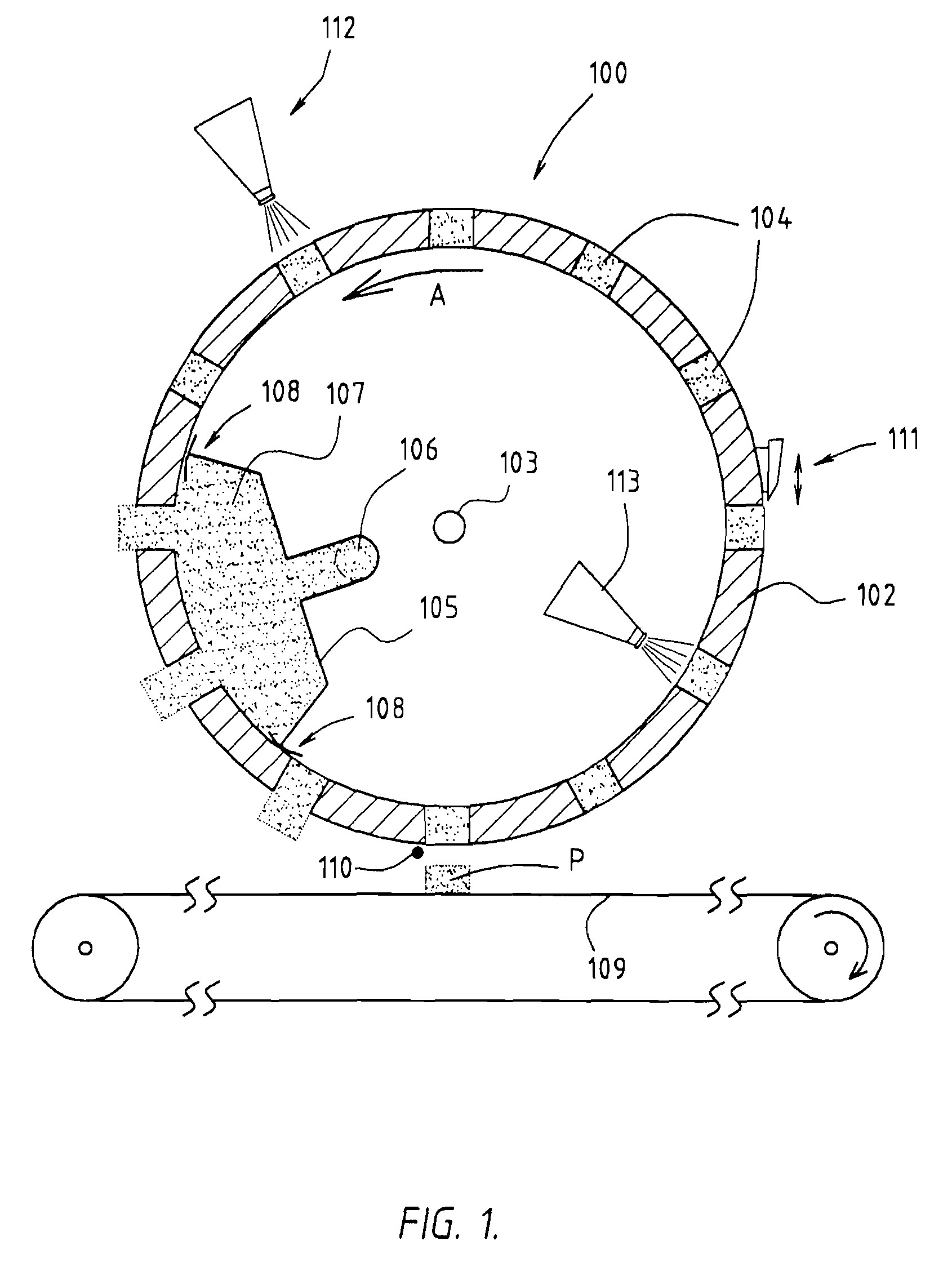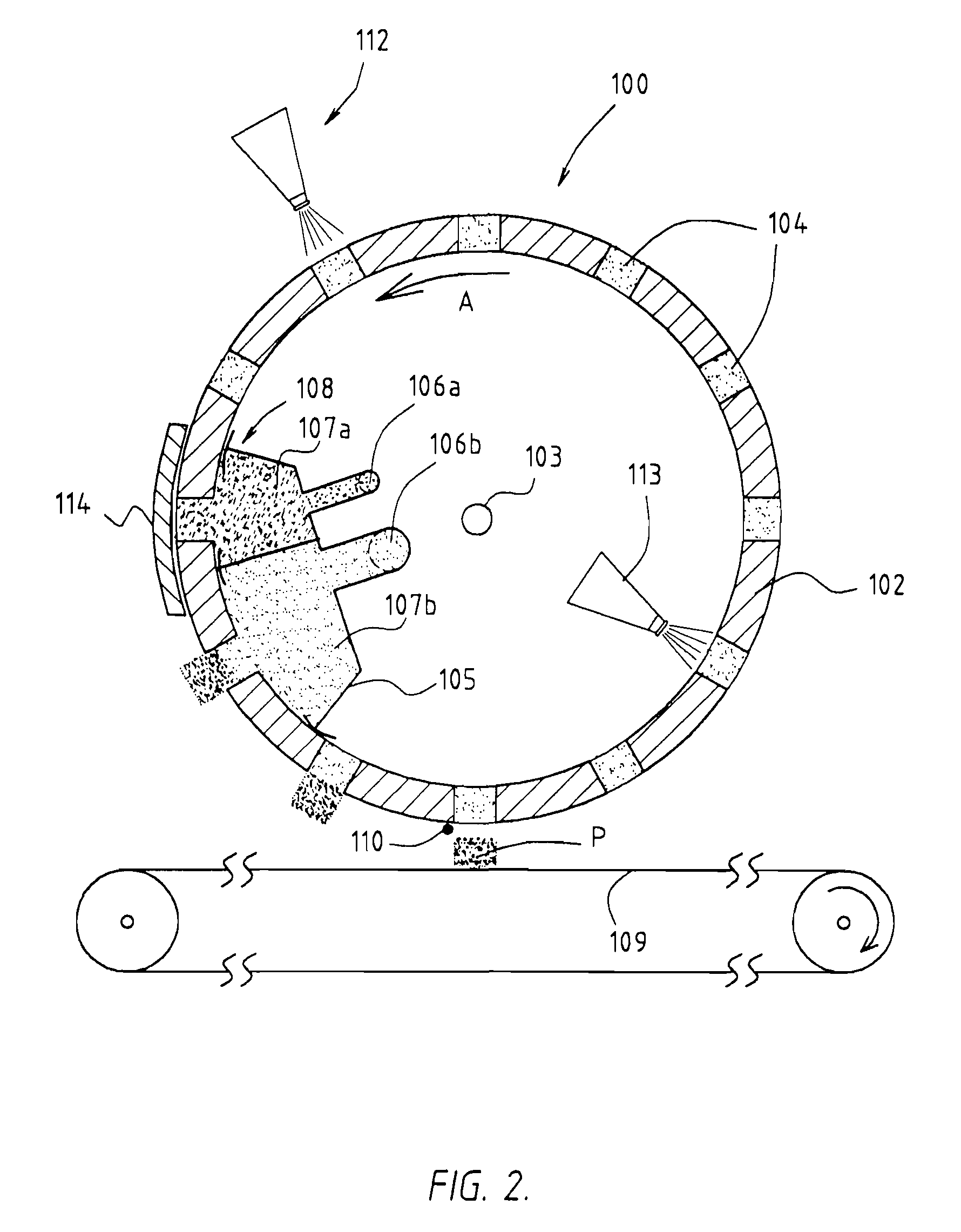Moulding
a three-dimensional product and moulding technology, applied in the field of moulding three-dimensional products, can solve the problems of limited capacity of slide-plate machines of this nature, limited reciprocating movement, and disadvantageous for further increasing production capacity, and achieve the effect of efficient packaging
- Summary
- Abstract
- Description
- Claims
- Application Information
AI Technical Summary
Benefits of technology
Problems solved by technology
Method used
Image
Examples
Embodiment Construction
[0053]FIG. 1 shows a first exemplary embodiment of a moulding device 100 according to the invention for producing edible products of three-dimensional shape from an inherently shapeless mass of foodstuff which is suitable for human consumption, in particular a mass of pounded (chicken) meat. The moulding device 100 is of the “rotating drum” type and comprises a rotatable drum 102 which, in an immobile frame (not shown), is mounted in such a manner that it can rotate about an axis of rotation 103, which in this example is substantially horizontal. The drum 102 is driven at a substantially constant rotational speed in a direction of rotation indicated by arrow A by drive means (not shown).
[0054] The drum 102 is provided with a plurality of mould cavities 104 which are distributed over the outer circumference and form openings which run all the way through the drum wall 102 and are thus open on both the outer circumference and the inner circumference of the drum 102.
[0055] In order t...
PUM
| Property | Measurement | Unit |
|---|---|---|
| fixing pressure | aaaaa | aaaaa |
| fixing pressure | aaaaa | aaaaa |
| fixing pressure | aaaaa | aaaaa |
Abstract
Description
Claims
Application Information
 Login to View More
Login to View More - R&D
- Intellectual Property
- Life Sciences
- Materials
- Tech Scout
- Unparalleled Data Quality
- Higher Quality Content
- 60% Fewer Hallucinations
Browse by: Latest US Patents, China's latest patents, Technical Efficacy Thesaurus, Application Domain, Technology Topic, Popular Technical Reports.
© 2025 PatSnap. All rights reserved.Legal|Privacy policy|Modern Slavery Act Transparency Statement|Sitemap|About US| Contact US: help@patsnap.com



